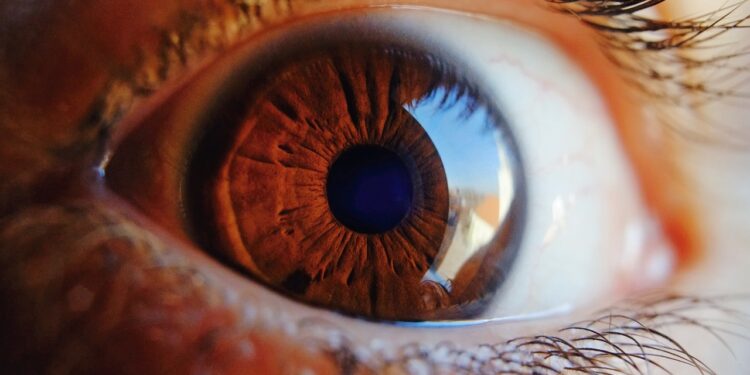Conjunctivitis isn’t the only viral eye infection. Meet Herpes Keratitis, an eye infection caused by the herpes simplex virus (HPV) which affects approximately one million people around the world, on a yearly basis.
This eye infection affects the cornea, which is the clear front part of the eyes, making it inflamed. It starts off mild with a typical irritation of the eyes, similar to when a particle gets into your eyes. Then it could progress to something more serious like vision damage. In this article, we’ll look at the types of herpes keratitis, symptoms and causes.

What is Herpes Simplex Virus (HSV)?
Since Herpes Simplex Virus is the causative of Herpes Keratitis, it is only right to know what HSV is all about. HSV comes in two types: HSV-1 and HSV-2. HSV-1 is typically the virus behind oral and eye infections like Herpes Keratitis.
HSV-2, on the other hand, is usually associated with genital infections like the typical herpes, the sexually transmitted infection. HSV-1, which is the main culprit for spreading Herpes Keratitis, can be transmitted through direct contact with infected skin or saliva.
Types of Herpes Keratitis
There are different types of herpes keratitis which include:
Epithelial Keratitis:This type of keratitis is the most common form which affects the outer layer of the cornea. This type causes the eyes to feel sore, red and also sensitive to light.
Stromal Keratitis: In this type of keratitis, the infection usually goes deeper into the cornea and causes scarring and also vision problems. It also follows epithelial keratitis and it’s usually more severe.
Endothelial Keratitis: Endothelial keratitis hits the innermost layer of the cornea which causes it to swell, and even create a blurry vision which causes serious vision issues.
Endophthalmitis: this type is rare but it more serious than the other type of herpes keratitis. Once this type infects the eyes, it spreads inside the eye leading to blindness if not quickly treated.
Symptoms of Herpes Keratitis
- Eye pain
- Redness of the white part of the eyes
- Tearing of the eyes (that is; the eyes begin to water)
- Blurry vision
- Sensitive to light
- It feels as though something is stuck in your eyes
- Swelling of the eyes and surrounding skin
Causes of Herpes Keratitis
Typically, the main cause of herpes keratitis is the HSV-1 virus, which is also the same virus that leads to cold sores around the mouth. As previously explained, this virus can be spread through direct contact with an infected person’s saliva or skin. However, HSV-2 which causes genital infection, can also cause infection, but it is less common in this case.
Risk Factors
While HSV1 virus is the main cause of herpes keratitis, there are also other things that can increase the chances of getting this eye infection.
Eye Injury: Any kind of trauma or scratch to the eye can make it easy for this virus to infect the cornea.
Weakened Immune System: There are some conditions that cause the immune system to be weak, such as autoimmune diseases and HIV, or even other medications that suppress the immunity of the body. In a case like this, the immune system is compromised and you become at a higher risk of getting herpes keratitis.
Certain Medications: As explained, there are certain medications that weaken the immune system, which makes you more vulnerable to infection.
However, the most tricky thing about this is that it can come back. This virus can stay dominant in the body and react due to stress, illness, or other triggers, which would lead to reoccurring eye infections later on in the future.
Bottom Line
Herpes keratitis is an eye infection caused by the herpes simplex virus (HSV), and it affects about one million people around the world each year. Unlike the more common conjunctivitis, herpes keratitis targets the cornea, the clear part at the front of your eye, causing inflammation that can lead to significant vision problems. HSV-1 is usually responsible and spreads through direct contact with infected skin or saliva, though HSV-2 can sometimes cause it too, but that’s less common.

















